About the myths of old and new
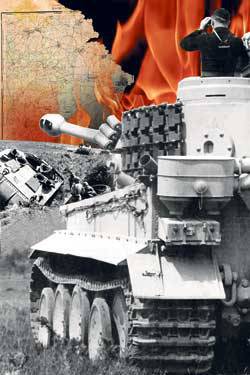 What are the mistakes and misses that popular historian
What are the mistakes and misses that popular historianThe name of Alexey Isayev today is very well known to all Russians interested in the military chronicle of our country. He is often invited in television and radio studios for discussions, programs devoted to the events of the 40-ies of the twentieth century, he often plays the role of a commentator in documentary films, again telling about that time.
But perhaps no less famous Alexei Valerievich brought nearly two dozen books written by him. And, undoubtedly, the most complete credo of the young 35-year-old historian is set forth in the work “Ten Myths about the Second World War”, which has been regularly reprinted in his book for several years in a row and is perceived by many readers as a real revelation that completely destroys the myths as a Soviet, and about western historiography. That is why this book of Mr. Isayev can be considered a landmark work for Russian historical self-consciousness.
IMPRESSED ADVANTAGES OF CAVALERY
However, Alexei Isaev, exposing old myths (in particular, about the idiocy of Soviet military leaders who allegedly insisted on strengthening the role of cavalry before the world war, about forty-degree frosts at the beginning of the Finnish campaign, profitability for the Red Army defensive mode of action and many others), right there creates new ones and his own revelations turn out to be not quite correct.
So, arguing that the cavalry, which in the Red Army on the eve of World War II was much larger than in the armies of other great powers, was very useful in the fighting, Mr. Isaev does not tell the whole truth. He tries to present the Soviet cavalry only as riding infantry, which practiced attacks in the equestrian system in exceptional cases when the enemy is upset and cannot offer strong resistance. Meanwhile, similar examples in the period of the Great Patriotic War were far from rare. In this case, not once the cavalrymen were thrown at the enemy, who managed to take up defense and had a sufficient amount of fire weapons. As a result, the cavalry was subjected to this beating. Here you can recall the tragic consequences of the use of the two cavalry divisions of the 16 Army near Moscow in November 1941.
Alexey Isaev argues that the Germans, who had disbanded their only cavalry division in 1941, were soon forced to re-establish cavalry units. Therefore, in the middle of 1942, there was a cavalry regiment in every German army group on the Eastern Front. The historian forgot only to mention that all these regiments, as well as the SS cavalry brigade deployed later in the SS 8 Cavalry Division, were used primarily in anti-partisan operations in a wooded area and did not undertake insane attacks on enemy positions.
As for the two cavalry SS divisions formed in Hungary in 1944, the personnel of these formations were to a large extent recruited from representatives of the local German population who had experience with horses. For the training and equipping of these divisions as motorized, the German command had neither time nor money.
But in the Red Army, cavalry was considered not as a palliative designed to compensate for the lack of motorized rifle units and formations, but as an independent branch of the military, having its own advantages over motorized troops in certain conditions. However, the main advantage of the cavalry, indicated by Mr. Isaev, is that a much smaller need for fuel was eliminated by the need to constantly replenish fodder for horses, which, by the way, turned into an almost impossible task and naturally converted cavalry into infantry. But even if the cavalry units did not find themselves in the enemy ring, but successfully moved forward, the fodder problem became the main cause of the slowing down of the offensive. Unfed horses could not bear riders for a long time, and complaints of fatigue of horse-drawn horses are a constant leitmotif of the reports of cavalry commanders.
The command of the Red Army, in contrast to the leadership of the Wehrmacht, involved directly on the front cavalry corps and even some semblance of armies in the form of cavalry-mechanized groups. For the latter, cavalrymen soon turned into a burden, as they moved a little faster than regular infantry.
SEND TO THE SLAUGHTER
When Alexey Isaev writes that “Poland in September 1939 of the year ceased to exist, despite the fact that there were still more than a million people of military age”, he prefers not to specify that the Red Army, which had invaded, did not allow these people to mobilize into the ranks of the Polish Army. in the eastern regions of the Commonwealth 17 September. However, the author of the “Ten Myths ...” took the example of the Poles in order to justify the theory of “permanent mobilization”, which was used in practice by the Red Army in the Great Patriotic War.
Mr. Isaev expounds it in the following way: “According to this theory, the formation of new divisions does not end when the deployment of a cadre army is completed, but is a continuous process. Some divisions are surrounded, destroyed, just suffer losses, while others are formed, trained and go to replace the first. ”
On paper looks beautiful. It was thanks to the constant influx of freshly formed divisions to the front, replacing the broken ones, according to Aleksei Isaev, who managed to win the war. In reality, this meant a massive death at the front of an untrained, and often unarmed, replenishment.
The historian proudly writes: “Instead of 4887, thousands of people according to the February 1941 mobilization plan were called up for military service of 14 ages, whose total number was about 10 million people. Thus, already in the first five weeks of the war, the calculations on which the Barbarossa developers based their predictions about the timing and possibilities for conducting a short-term campaign against the USSR were based.
True, Mr. Isaev forgets to say that the overwhelming majority of the recruits sent to the army did not receive adequate training, while others did not even receive rifles. Stalin simply sent for slaughter few able soldiers. The Germans, of course, did not expect this, and in this respect, of course, they miscalculated.
BETTER TO TEST?
The author insists that the offensive was the optimal course of action for the Red Army, and criticized adherents of defensive tactics. In particular, using the example of the first Kharkov battle in May 1942, Alexey Isaev argues that the insufficient density of the defense of the Soviet troops caused the breakthrough of the positions of the 9 army and the encirclement of the Soviet assault force, which was striving to seize Kharkov.
At the same time, the researcher for some reason does not ask himself: what would have happened if the Soviet units had not moved forward, but had been preparing to defend the Barvenkovsky ledge, using a number of divisions of the shock group to strengthen the weak sections? The density of defensive orders would certainly have increased. Perhaps even then the Germans would have occupied the ledge, but with heavy losses, and at the same time a much larger number of Soviet troops would have been able to safely retreat to the east.
Mr. Isaev assures that any defense in World War II was easily swept away by artillery fire and strikes. aviationinflicting huge losses on the defenders even before the start of an enemy attack. Yes, this is a pretty convincing argument, but the author of “Ten Myths ...” for some reason did not think about this. When the same bombs and shells fell on the Red Army, who went on the offensive in dense chains (and poorly trained soldiers didn’t attack the enemy in another way), the damage turned out to be even greater: trenches, dugouts, dugouts, at the very least, but shelter the soldiers from enemy fire ( nothing to say about bunkers or bunkers in this plan).
Alexei Isaev is also trying to prove that if a group broke into our rear tanks and motorized infantry of the enemy, it is absolutely impossible to determine where it will be after a few hours, and even more so in a day or two. Therefore, they say, it is useless to erect defensive structures, you will still miss the mark, and it’s better to stop the enemy with a counterattack on the flanks, which the Soviet command did, sometimes successfully, sometimes not so.
But after all, the art of war just comes down to the most accurate prediction of the plans of the enemy and in accordance with this plan the future actions of his troops. Soviet commanders and commanders also had maps, so it could be assumed which roads the enemy column would most likely take and how fast (to determine this was not particularly difficult), to which point the enemy would first rush. Based on this build a defense to prevent the implementation of his plans.
By the way, before applying a counterstrike, you still need to conduct a thorough reconnaissance to find out where the enemy units are located. Otherwise, the blow will have to be in an empty place or it will meet the enemy prepared in advance to repel the enemy counterattack. Unfortunately, Soviet generals very often inflicted counterattacks on enemy tank groups, without bothering with reconnaissance or even reconnaissance of the terrain, which led to wasted losses.
CASE IS NOT ONLY IN A TANK ...
The book proves that the superiority of the thirty-fours and KVs over German tanks at the beginning of the Great Patriotic War is also a myth that the Germans in most cases successfully fought with the latest Soviet armored vehicles, and some of the failures of the German forces were the result of their tactical mistakes. This is quite true, but Aleksei Isaev does not explain why this happened, only vaguely noting that in the Red Army "there were certain problems with the tactics of using tanks in the 1941-1942."
The trouble, however, is that these very “definite problems” did not disappear anywhere in 1943-1945, when the irretrievable losses of Soviet troops in tanks still repeatedly exceeded the German ones, and in some battles - dozens of times.
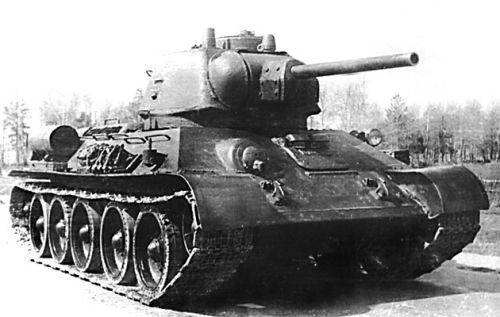
The historian lists the minuses of the T-34 and Klima Voroshilov, which boil down mainly to the imperfection of the undercarriage, which is especially characteristic of the HF. He maneuvered badly, had a low-power engine for his weight, bad transmission and gearbox. But each tank has its drawbacks. Therefore, the task of any ordinary tanker, tank commander and military leader is precisely to maximize the strengths of their vehicles and the weaknesses of enemy vehicles, try to minimize the advantages of enemy armored vehicles without giving the enemy tanks the chance to implement all of the forces in them opportunities. The same thing, by the way, should be said about aviation technology.
And here, sadly, it must be stated: with regard to the skills and abilities that determine the level of combat skills of tank crews and pilots, the Panzervaffe and Luftwaffe are very much superior to the Red Army air forces and the Soviet NTVMs. Even at the end of the war, this gap, although narrowed, did not disappear.
In addition, Alexey Isaev does not write that the essential advantage of German tanks was a more comfortable arrangement of crews compared to Soviet machines, and this allowed them to more effectively act in battle. In the Wehrmacht, the tank was a supplement to the crew, while in the Red Army the crew was a supplement to the tank, and the space to accommodate the tank crew was reduced due to more powerful armor and weapons.
Still, the T-34 was a very good tank and at the beginning of the war, with proper use, took the upper hand over all German tanks. It is not surprising that the Germans often used captured Thirty-Fours in battles to fight the enemy’s armored vehicles.
VIEW ON AVIATION
One cannot but agree with Alexey Isaev, when he quite rightly notes that all sides significantly overestimated the data on the losses of enemy aircraft, because in the fever of real combat clashes this figure was difficult to determine for sure. In this case, the author provides the correct information regarding the results of the Soviet-Finnish war. We are talking about 53 shot down in aerial combat Finnish aircraft (Soviet aces claimed 427 victories). But the next one is presented as another reliable figure - allegedly the Soviet anti-aircraft artillery destroyed 314 Finnish vehicles.
Meanwhile, in the Finnish Air Force during the Winter War there were only about 250 aircraft, and the damage caused to them by the Soviet anti-aircraft artillery was insignificant. In fact, Finnish aviation irretrievably lost only 76 aircraft during the fighting and for technical reasons, while the Red Army and the Baltic Air Force fleet, according to the estimates of Pavel Aptekar, made on the basis of the funds of the Russian State Archive of Artists, 664 aircraft were lost.
Alexey Isaev, which is very valuable, recognizes the relative technical backwardness of the Soviet aircraft industry, associated with accelerated and overdue industrialization, when "it was not possible to reach the level of European countries in 10 years". However, from this objective statement the author does not draw the obvious conclusion about the low level of pilot training and bad tactics of the Soviet Air Force. It only shows that in reports both those and others were wrong, and both were wrong in the battles, but he does not formulate a general conclusion about the ratio of combat skills and casualties of the parties for the war, because such a result would be disappointing for the Red Army .
As applied to the struggle for air supremacy, such a conclusion was made, for example, in the fundamental book by Andrei Smirnov “The combat work of Soviet and German aviation in the Great Patriotic War”, to which I refer readers (it proves, in particular, that all types of Soviet aviation their combat effectiveness in two or three times inferior to the Luftwaffe).
Mr. Isaev proudly declares: “In the USSR, a conscious choice was made in favor of the mass air force with an average level subsidence inevitable for any mass event.” But in the work of Alexey Valerievich it is not said that the losses both in airplanes and pilots in Soviet aviation were several times greater than those of the enemy. But this could have been completely avoided if pilots and aviation commanders were trained as thoroughly in the USSR as in Germany and Western countries. In most cases, our fighters did not protect their troops from enemy aircraft, but uselessly “ironed the air” in those places where the Luftwaffe planes did not intend to appear.
Characteristically, Aleksei Isaev criticizes the Germans' fascination with Me-262 jet fighters, arguing that the same results in the fight against “flying fortresses” could also be achieved with the help of piston fighters, which would have to accomplish only more combat missions with 20-30%. Therefore, it would be necessary to increase the production of machines not with the newest jet, but with the old piston engines and the training of pilots for them. But the author overlooks that the loss of jet fighters by one downed "flying fortress" was less in 2-3 times than in piston ones, and, accordingly, fewer crashed pilots.
Incidentally, Mr. Isaev’s hypothesis is hardly solid about the fact that if Me-262 had been developed as a bomber since the spring of 1943, it could have prevented the Allied landings in Normandy. After all, the historian himself admits that the main limiting factor in the production of jet aircraft was the lack of engines, and this circumstance did not depend in any way on whether the plane was a fighter or a bomber. Before the start of Operation Overlord, the Germans managed to assemble all the 23 jet machines (all in a bomber version). Of course, they could not change the course of the war.
HARMFUL SEND
Aleksei Isaev considers it a myth that the Soviet commanders were forced by the authorities to “attack, rushing hundreds of people to a machine gun in the“ human wave ”style. Unfortunately, such “human waves” of the Red Army men, oblique with artillery and machine-gun fire from unsuppressed firing points, were copiously imprinted in the soldiers' memoirs and letters from both the Soviet and German sides, and there is no reason to distrust them.
Alas, it was really true, the Wehrmacht fought better than the Red Army, which did not save Germany from total defeat. Stalin’s Russia could not win otherwise. In essence, it remained a feudal country, where the masses were only consumables for which the Germans had to spend their ammunition.
However, Mr. Isaev does not want to think about the real price of victory, but leaves the general impression to the readers that we, in general, fought no worse than the Germans, and by the end of the war, that was definitely better. And all the mistakes that were committed by Soviet commanders can be found in the command of the Wehrmacht and the armies of the Western allies.
This is not a harmless message, since it is intended not only to preserve the myth of the Great Victory in memory, but also to justify the current Russian military doctrine with a focus on a massive draft army. But such a doctrine today can only bring harm.
For a multi-million trained reserve (trained, however, no better than during Stalin’s time), Russia no longer has a mass of modern tanks and aircraft. Neither China nor America does not allow this reserve to be used in ordinary war, since potential opponents of trained reservists are an order of magnitude greater. And the predominantly invoking structure of the Russian army greatly slows down its modernization and does not allow for the proper development of professional units of constant combat readiness.
- Boris SOKOLOV
- http://www.vpk-news.ru"rel =" nofollow ">http://www.vpk-news.ru
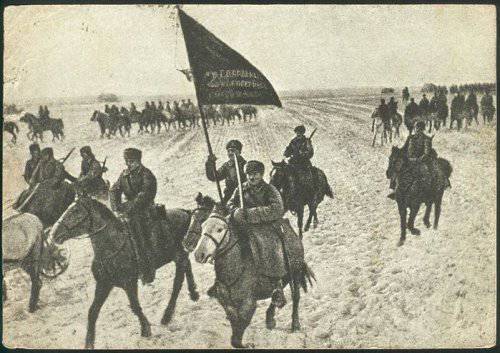
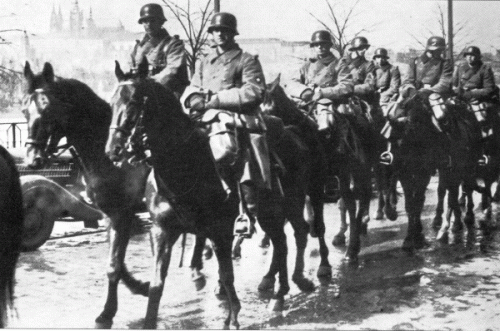
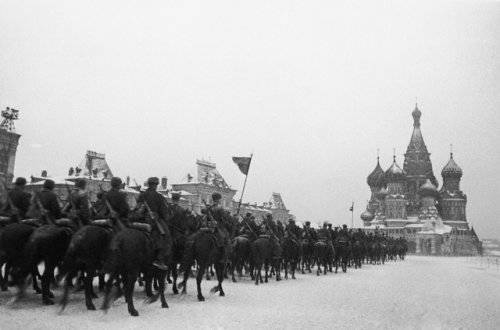
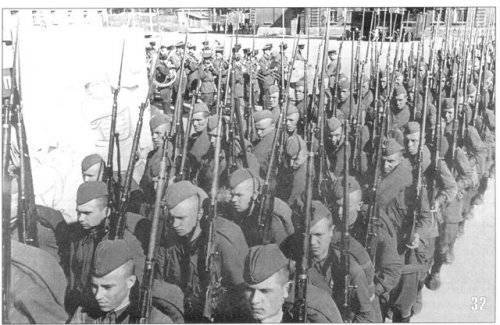
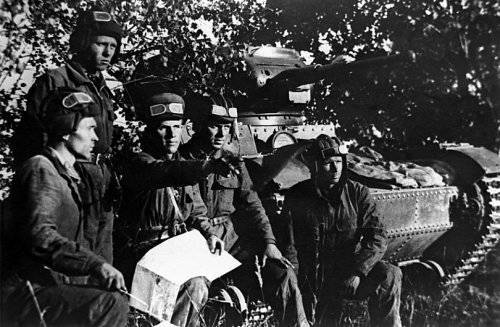
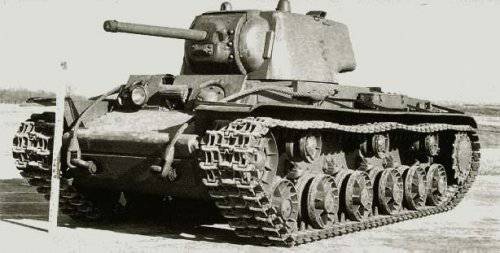
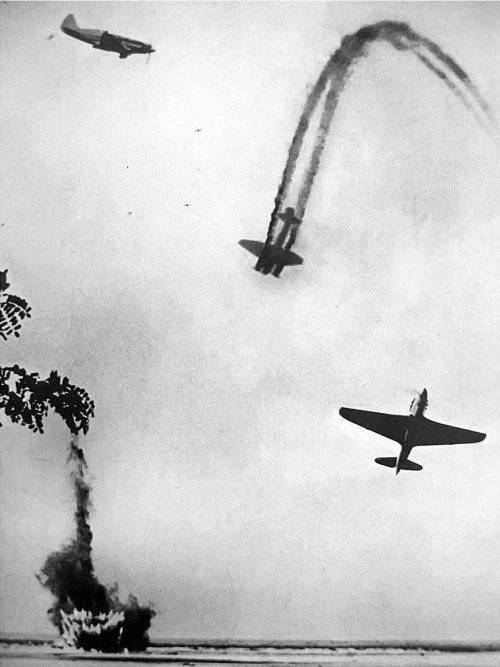
Information